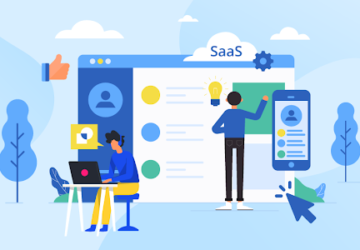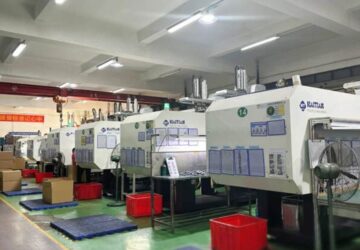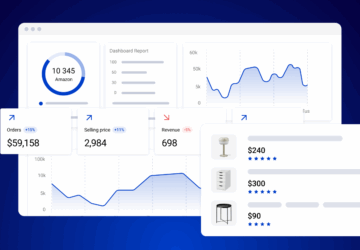Tech conversations often center around big players and broad solutions. But the tools that are quietly transforming small business operations aren’t one-size-fits-all platforms. They’re vertical SaaS products—custom-built solutions that cater to the specific needs of individual industries.
Small businesses are recognizing that specialized software does more than general tools ever could. Whether it’s automating compliance or smoothing out industry-specific workflows, vertical SaaS is giving these businesses a sharper edge. And as more SMBs adopt these tools, a subtle shift is taking place in how they handle operations, especially in critical areas like HR and payroll.
Why General Tools Don’t Cut It for SMBs
One reason vertical SaaS is thriving is because the challenges facing a construction firm look nothing like those facing a salon or a dentist’s office. Trying to manage unique workforce dynamics with a generic software platform just creates more friction. That’s where industry-specific HR and payroll solutions provide a competitive advantage, offering tailored features like job costing, scheduling, or tip tracking, depending on the business.
When companies integrate customized operational tools into HR and payroll, they eliminate the time lost to manual tasks and mismatched systems. These tools are helping businesses run smoothly without needing in-house expertise in finance or employment law. By embedding compliance, time tracking, and benefits into workflows already familiar to the industry, small businesses reduce risk while boosting productivity.
SMBs also gain something less tangible but equally important: peace of mind. Many of these tools come with built-in compliance support. That means when local labor laws shift or tax regulations update, the software adjusts too. Companies can focus on customers, not catching up with ever-changing rules. For sectors with seasonal workers or high turnover, like food service or retail, automated labor law updates have become essential.
Serving the Needs of Niche Industries
Vertical SaaS shines brightest in industries with unique operational quirks. Take veterinary practices, for example. They don’t just need appointment scheduling—they need patient history tied to pet owners, integrated billing, and compliance with both medical and local business regulations. General software can’t offer that level of detail without heavy customization.
In manufacturing, the requirements shift again. Scheduling staff around complex machinery, managing certifications, and tracking output alongside payroll all demand tools that go far beyond simple time clocks. Businesses using industry-specific platforms are better equipped to adapt to real-world demands without extra admin load.
The same holds for dental offices, salons, or consulting firms. The more closely a tool aligns with an industry’s structure, the more value it adds—not just by reducing administrative effort, but by surfacing relevant insights that help leaders make better decisions.
Meeting Employee Expectations in a Tech-First Era
Today’s workforce expects employers to adopt digital tools that simplify everything from onboarding to benefits enrollment. That’s not just a preference—it’s an expectation. In industries where turnover is high, an intuitive onboarding experience can significantly impact retention.
Vertical SaaS platforms are rising to meet that expectation. By offering mobile-friendly portals, self-service options, and industry-specific task automation, these tools improve employee satisfaction while reducing HR burdens. And because they’re designed with specific sectors in mind, the features align with daily tasks rather than forcing workarounds.
For example, a restaurant employee might clock in, request time off, and review tip breakdowns—all within the same interface. A dental hygienist could manage continuing education requirements alongside benefits enrollment. These conveniences support a better employee experience, which leads to better retention outcomes.
Why Integration Beats Fragmentation
Historically, SMBs had to piece together multiple tools to cover basic business needs. One platform for payroll, another for scheduling, a third for compliance. The result? Inefficiencies, inconsistent data, and higher costs.
Vertical SaaS platforms change this by offering deeply integrated systems that speak the same language. When HR, benefits, and scheduling tools are built around specialized operational workflows, the experience becomes seamless. There’s no toggling between apps or re-entering the same employee information across multiple databases.
Better integration doesn’t just save time. It also allows for smarter analytics. If your payroll system keeps track of employees, schedules their workflow, and monitors their take-home pay, it’s easier to identify cost-saving insights. These kinds of tools help small businesses stay agile in tight markets.
The Road Ahead for Vertical SaaS
As more industries realize the ROI of using vertical platforms, the bar for functionality will continue to rise. SaaS providers will need to stay nimble, adding features without bloating their offerings. Flexibility and user experience will become just as important as compliance or automation.
Expect to see more vertical platforms weaving in AI capabilities to help business owners make faster decisions. For example, systems might suggest optimal shift assignments based on staff performance data or flag compliance issues before they become problems.
Most importantly, SMBs will keep demanding solutions that reflect how they work. That means the next wave of tools won’t just be smarter—they’ll be more intuitive, more specific, and better aligned with day-to-day operations.
For the small business community, this is more than a trend. It’s a fundamental change in how companies choose their tools. Instead of adapting to generic software, they’re adopting technology that already fits. That shift is helping them grow stronger, move faster, and compete with businesses many times their size.
And for the tech space? It’s a sign that the future of SaaS isn’t broad—it’s deep.







